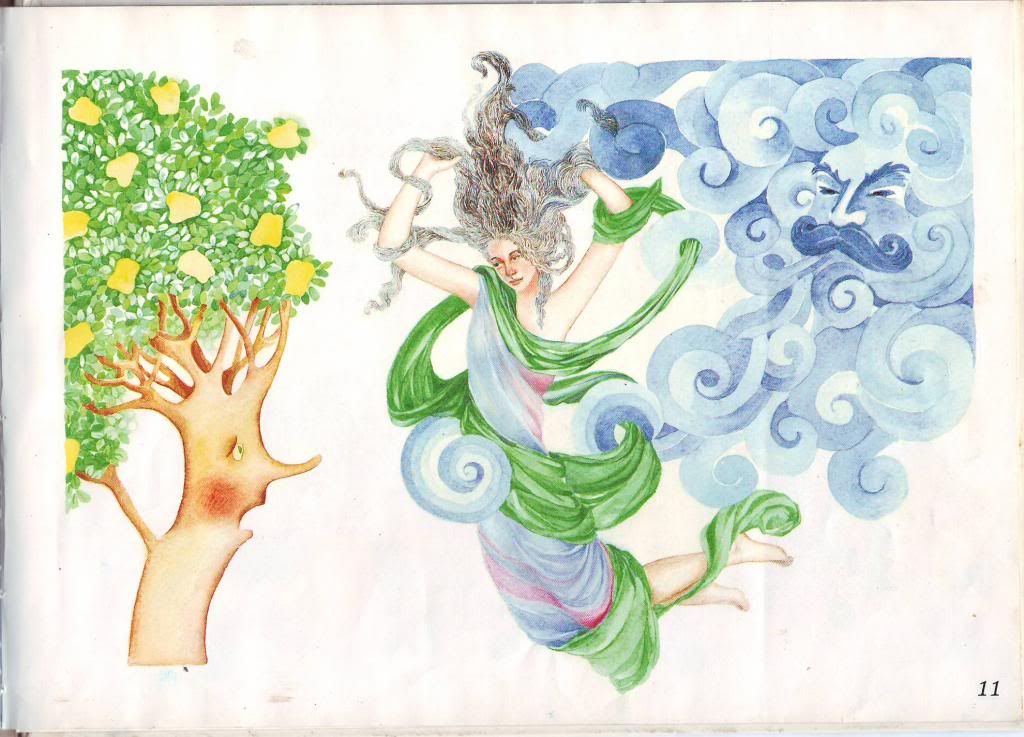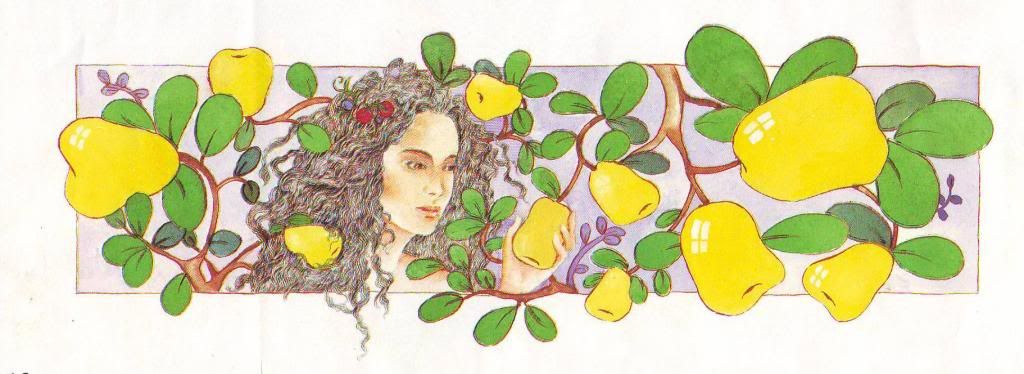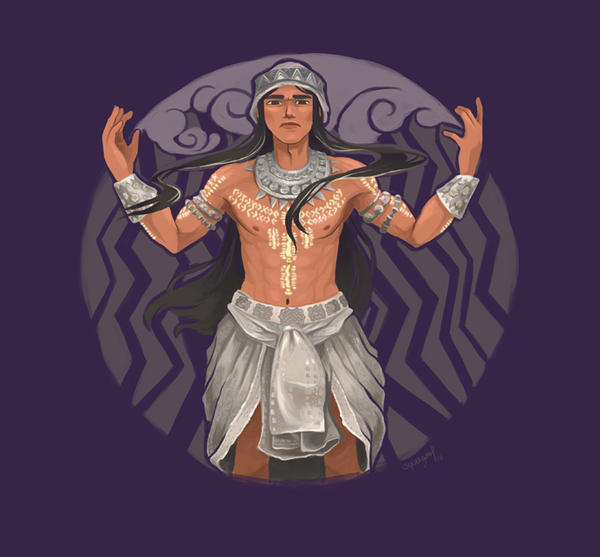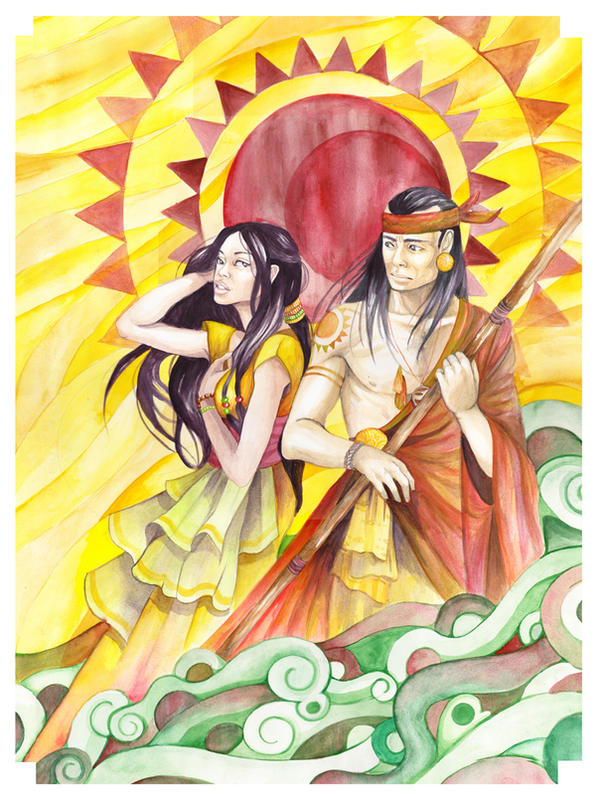LALAHON
HARVEST DEITY
Lalahon is a mythical diwata found in ancient visayan
folktales and written myths, her traditions has changed greatly especially
since the Spanish conquistadores occupied the Philippines. She is seen as a
goddess of harvests, guardian of volcanoes, and goddess against natural
calamities brought about by volcanic eruptions, wildfires and earthquakes.
 |
Lalahon as portrayed by Solenn Heusaff
GMA Network's Indio, 2013 |
In the old pre-Spanish days, Lalahon was more popular deity from the aeta and
negrito tribes that live on forests in Mt. Kanlaon to the farmers on the plains
of ancient Negros. The ancient Negrense groups who live in Mt. Kanlaon believe
that volcanoes are like women, quiet and serene and beautiful sometimes, but
can also be fierce, damaging and violent in it's outbursts, and the island of
Negros itself has it’s own volcanic belt which were said to be the favorite
haunts of Lalahon (aside from Mt. Kanlaon which is considered her home, she is
also believed by the ancient settlers to also frequent, Mt. Silay, Mt.
Mandalagan, and the complex volcano of Negros Oriental, Mt. Talinis. The malay
neighbors that live in the Island of Negros adopted these aeta beliefs and
Lalahon evolved into a representation of a woman, with hair of fire, ruby lips,
eyes of hot coals and a beautiful body that can turn into a river of molten
lava due to her associations with the Kanlaon volcano, while a majority also
believed she is more of an agricultural goddess, in charge of harvest time and
protectress of wildlife.
Her worship is predominantly found in the Negros Isle, which has it’s own
volcanic belt and Mt.Kanlaon, the famous volcano in the island of negros and
also a member of the Pacific Ring of Fire, it is also known as one of the
“salad bowls of the Philippines” due to the rich minerals found in the soil
around the area of the volcano, it provided the people with a rich assortment
of crops, giving rise to Lalahon’s fame as an agricultural deity. The people in
this region in the olden days believe she is also a harvest goddess and the
goddess who brings in the bounty during dry season when harvest season comes
aside from being the protrectress of the fields from calamities earthquakes and
volcanic eruptions.
DAUGHTER OF KAN-LAON
Lalahon is seen as a benevolent deity, often seen as goddess formed from the
essence of Kan-laon making her his daughter, while some even see her as the
female aspect of Kan-Laon who’s name means “ Eternal One”,”Exalted One” or “The
One who moves Time”, while Lalahon’s name means “ the one who ripens”or “the
one who brings the time of plenty”, these titles give a nod to her being an
important harvest goddess and her relation to the Supreme deity of the Negrense
people, Kan-Laon. These two deities have some shared similarities yet Lalahon
is distinguished from Kan-Laon mostly due to a couple of reasons, one being the
gender and secondly through their appearance and contributions in mythical
stories. While most stories picture Kan-laon as the supreme god who left the
mortal world and decides to spend eternity in his own heaven from inside Mt.
Kanlaon, Lalahon is seen as the goddess who lives in Kan-laon and graces the
people with her presence, time and time again, especially during harvest
season, ready to grant abundance to the righteous and punish the selfish and
the wicked. But even Lalahon wasn’t spared from controversy, some speculations
include that she likes female virgins, since their flesh would make her even
more beautiful, and if a tribe sacrifices a virgin princess from a warring
tribe, she will be satiated and bless them with a good harvest and will spare
them from catastrophes like volcanic eruptions and earthquakes for the year.
She is also speculated to hate excessive noise, and in harvest times, she would
send locusts to eat the golden palay to make the villagers miserable and hungry
as punishment. She was seen as a deity capable of unspeakable cruelty but also
venerated during harvest festivals, with a day of worship and sacrifice
dedicated only for her. She has her share of the crops and also the finest wine
or “ tuba”, spilled to the earth in her name so she can taste the bounty of the
people.
 |
Lalahon as portrayed by Solenn Heusaff
GMA Network's Indio, 2013 |
EVOLUTION OF IMPORTANCE THROUGH SPANISH INFLUENCE
However, when the Spanish came, bearing with them the teachings of
Christianity, Lalahon's image evolved again, linking her with an early
christian saint named Sta. Agatha, the patroness against earthquakes and
volcanic eruptions and also of nurses and against breast cancer. She was
depicted during those days as a full figured woman with very large breasts and
a veil of smoke, reminiscent of the catholic saint.
Lalahon remains to be one of the well-loved, independent deities of ancient
times, a deity of multiple origins and functions; regarded as of noble birth;
born out of the lava of Mount Kanlaon from the supreme deity’s essence, a
female aspect of/from Kan-laon himself, she was also associated with a few
visayan heroines like Catalina of Negros Oriental who is also believed to
reside in the vicinity of Mt. Kanlaon and the legendary Princess Kansilay, a
local mythical heroine of Silay, who’s patrons include Lalahon. Some babaylans
believed that deep in the heart of the volcano is the ”gateway” to Kanlaon's
Upper heavens and Lalahon is the goddess who protects that gateway, people who
push their luck too far to gain access to this vortex are immediately punished
by this goddess. The tobacco plant is sacred to her (as also to Kanlaon) and
her favorite animal is the Negros spotted deer or Visayan spotted deer (which
is now very endangered and near extinction one of the few fauna only found in
Negros). The fire tree is said to be her tree and sometimes in the olden days,
babaylans would go into a trance with sacred herbs and intoxicating “tuba”
under the tree or near the crater of the volcano to gain wisdom from this
impressive diwata.
 |
Lalahon as portrayed by Solenn Heusaff
GMA Network's Indio, 2013 |





















